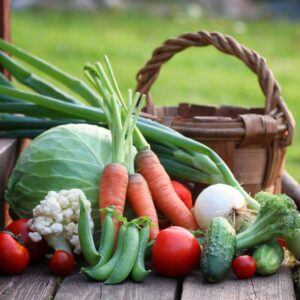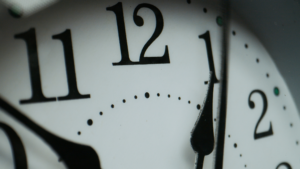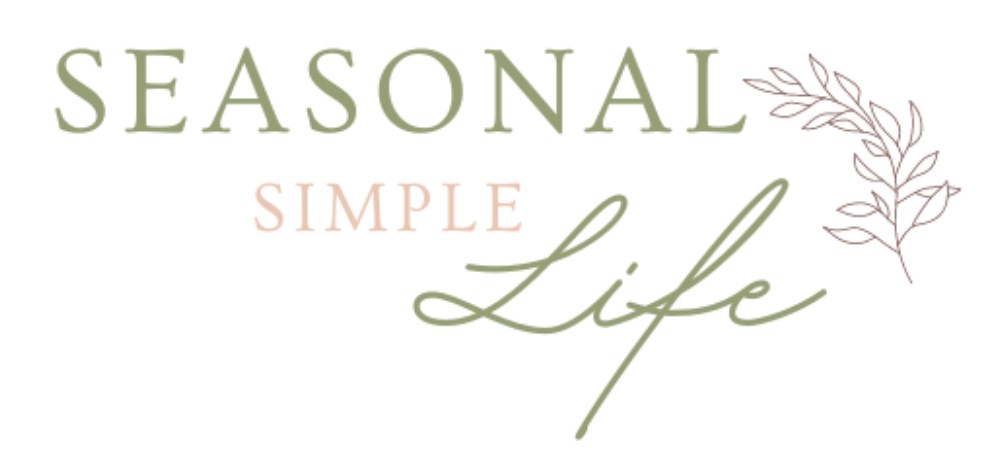.
Spring is still far away at the beginning of the year, but the new gardening season has started already! The first vegetables wait eagerly for you to seed starting them because they need this headstart to prepare for the warm season. But seedling cultivation isn’t just for spring time. In fact, when you seed-start veggies until late summer, you’ll have a continuous harvest.
Let’s see what you can do to make it a success.
Why seed starting?
Isn’t it a lot of hard and tedious work to seed-start vegetables indoors?
Well, I would be lying if I told you you wouldn’t need to put in an effort. But it’s so worth it! In fact, there are several huge advantages of seed starting:
Saving costs
Seed starting will save you an enormous amount of money. Don’t believe me? Let me show you a small calculation:
One seed package of tomatoes, containing 10 seeds, costs about 4 €, that is 40 cents per plant. One tomato plant at the nursery costs at least 4 €, sometimes even more, depending on the variety. That’s ten times the amount you pay for seeds. Seeing as I grew about 40 tomato plants last year that’s a saving of 144 €!
Even if you just have a small garden or even only some pots you use for growing vegetables, your savings will still be considerable.
Variety
When you buy seedlings from a nursery, you usually can’t choose the variety of the vegetables you want ot plant. Or – if you can choose – they only have very few of the most common types.
BUT: when you decide to start your own vegetables and browse your first seed catalogue you’ll find a whole new world of seed varieties. It’ll be almost as if suddenly you’ve discovered the door to Narnia!
You can choose from varieties that are perfect for your climate, heirloom varieties, old varieties and even varieties that have become almost extinct! By supporting this diversity, you not only get healthier plants that are better accustomed to your climate but you also contribute actively to preserving the diversity of varieties.
Headstart
We all love tomatoes, eggplants, chilis and peppers but they need a long time to mature. If we were to sow them only when it’s warm enough outside (in my zone that’s mid-May), they would never have enough time to ripen and they’d only get to produce some green fruit before autumn frosts fall.
By seed-starting we fool them a bit by pretending that it’s warmer and sunnier than it actually is, inducing them to germinate. By the time we can transplant them, they’ll have grown into healthy and sturdy young plants already.
Plant protection
Indoors, your vegetable seedling will be secure from pests like snails, cabbage flies, voles and other hungry animal mouths. Also, they are protected from rain, wind and strong sunshine while still young and vulnerable.
Efficient use of bed space
You can use your bed space more efficiently when seed starting. Sow more than the required amount of plants and only transplant the healthiest and sturdiest outside.
When your beds are fully planted in early summer, seed start autumn vegetables indoors. When you harvest a vegetable variety, you can already plant the next batch, making sure there won’t be a gap for too long.
Which vegetables can you seed start?

Basically, there are three groups of vegetables:
– those that MUST be seed-started to get a chance of harvest
– those that CAN be seed-started but needn’t necessarily be and lastly
– those that MUST NOT be seed-started.
The sloths amongst our vegetables are tomatoes, eggplants, peppers, chilis and physalis. They need a long time to mature and for that reason must be sowed indoors between January and March already. Later would be too late.
Then we have the “sensitive souls” like lettuce and all cabbages. Theoretically, you can sow them directly outside but they are prone to devoured by slugs while still young and their chances of surviving an attack of the pests are meagre.
Starting them indoors, however, and not transplanting them before they have become healthy, sturdy seedlings, makes them stronger and less vulnerable to pests.
The third group are those vegetables that can’t cope with transplanting, among them almost all root vegetables for example carrots and turnips. Think about it: their goal is to develop long and big roots, so they don’t like being removed from the soil (even for a short time) to be transplanted again. Root vegetables are best sown directly into the bed, except for knob celery.
When in doubt, look at the back of your seed packages: most of them have a recommendation as well as the appropriate sowing and planting times there.
Timing Your Seedlings

Every vegetable has its own special requirements regarding the time of sowing and we gardeners must stick to that time frame as if our veggies lives depended on it.
Which they do.
I know how tempting it can be to sow tomatoes in January already but believe me you’ll regret it. Yep, speaking of experience here. By the time you can finally plant your tomatoes outside, they’ll be too long and weak to bear their own weight, let alone bear lots of fruit.
The right timing is a decisive factor for healthy and fruitful plants. It mostly depends on the last frost dates in your hardiness zone.
Some vegetables must be seed-started early, others have a longer time frame. If you want to harvest continually (and who doesn’t?), one-time sowing is not enough. That’s why we sow vegetables like spinach, radishes, lettuce and carrots several times a season. This principle of staggered sowing and planting is called succession planting and is a total game-changer in the vegetable garden! If you want to learn more about it, this article gives you all the details.
Essential Supplies
Plant lamps
Light is an important factor when it comes to seedling cultivation. I have a rather large south window that’s occupied with seedlings from February to summer and that’s good. Nevertheless, when the seedlings develop a certain stage of maturity, I put them in the (cooler) guest toilet and install a plant lamp. These lamps not only have the ideal light range for plants (which is why they have a very nasty violet shade for our eyes) but they can also be timed to shine for 12 – 16 hours, depending on the plants’ needs. You’ll never get this amount of light time, not even at a sunny window.
It’s clever to use a shelf for your cultivation of seedlings and install plant lamps on the underside of each shelf board to save space.
Planting pots
Now that we know where to put our seedlings and what lights to use, we need containers. Basically, we can use all sorts of planting pots and trays as long as they are not too high (which would require too much soil) and have good drainage. You can reuse plastic pots from former plants, special cultivation trays and even plastic fruit boxes. There are ready-made biodegradable pots that you can plant out. Alternatively, you can make paper pots that you fill with soil by yourself, or you use egg cartons or even egg shells. There’s almost no limit to the variety of pots you can use.
No matter what containers you use, you should have a kind of transparent hood you can put onto it to create a greenhouse atmosphere with warm temperatures and relatively high humidity. If you don’t have a hood, you can also use glass covers or even cling film. Make sure that you lift it several times a day to prevent mould or other fungi from growing. Once the seedlings are large enough to be separated, you can leave them without this protection.
Wash the containers thoroughly with hot water before using them for seedling cultivation. That way you can destroy germs and fungi before they can wreak havoc.
Heating mat
For warmth-loving plants such as the above-described tomatoes and eggplants, peppers and physalis, you may want to use a heating mat on which you can put the containers. These mats work like a hot water bottle and warm up the soil, inducing the seeds to germinate.
Cultivation soil
No matter the outer appearance of your pots or trays, their “inner value” – aka cultivation soil – is what counts! A good cultivation soil is crumbly and low in nutrients. “Normal” potting soil is not suitable for seed-starting as it contains too many nutrients. Seedlings don’t need nutrients yet. If the soil contains too many nutrients, the seedlings grow too fast, become leggy and the roots may be damaged.
You can either buy ready-made cultivation soil or use a mixture of equal parts garden soil, well-rotted plant compost and sand. Manure compost is not suitable as it contains too many nutrients. If you use homemade soil, you’ll want to bake it at 150 °C (300 °F) for 20 minutes to kill weed seeds and diseases.
Seeds
For me, seed catalogues are a bit like Santa’s grotto. I can spend hours – days even – browsing through them and noting down every plant I’d like to grow although I don’t buy all of those seeds in the end. But still plenty. Well, other women buy shoes…
Anyway, with newly bought seeds, you can be sure that they’ll germinate but often there are more seeds in a package that you’ll need in one season. Likely, you’ll have seeds from last year – or even the year before. As seeds can exterminate, you’ll have to check if they still germinate with this simple trick:
Fold two paper kitchen towels in half and moist them with water. Put 10 seeds of one seed package onto one towel and cover them with the second one. Keep it all moist and wait until the seeds start to germinate. When at least 8 out of the 10 seeds start growing (that’s 80 %), this package is still ok to use.
Plant labels
There was a time when I passed labelling my plants because I knew I’d recognize them once they had germinated simply by looking at their leaves. Ok, I was too lazy to label.
Long story short: I didn’t know which plant was which and my garden became a huge Kinder Suprise Egg. It was a bit like buying a truckload of tins, scraping off the banderoles, mixing them up and playing food roulette.
An easy way to label your plants is with ice sticks. Write the name of the vegetable and variety with a pencil on the stick and put it into the pot. For outdoors, plastic or slate labels are better to endure weathering.
Miscellaneous
You’ll need a watering ball or a spray bottle which are loads better for watering sensitive seeds as they don’t have a hard jet of water that could water off the seeds to the corners of the pot.
Later, when the seedlings are ready to be separated and repotted, you dibber comes in handy.
Ideal place for seedling cultivation
Seedling cultivation will occupy some space indoors for quite a long time. So, where to put all those plants? The most important factor to consider when choosing a place is temperature.
It shouldn’t be too warm. A cool stairwell, a non-heated guest toilet or even the basement are great. Although some vegetables like tomatoes, peppers and eggplants need it warm to germinate but once they are large enough to be separately planted into larger pots, they are happy with cooler temperatures.
Seed Starting Process step-by-step
Got everything you need for seedling cultivation? Great! Let’s get started.
1. Sowing
Put the soil into your containers and moisten it. Sow the seeds as deep as they need to be sowed (look for that information on the back of the seed packages), lightly press the soil so that the seeds are pressed down and water it all with a spray bottle or a watering ball.
Oh, and remember to label your plants 😉
Some plants, like lettuce or basil mustn’t be covered with soil but need the light to germinate.
2. Temperatures
Some vegetables need relatively high temperatures to germinate, others like it cooler. You can usually find this information on the back of the seed package. Giving your seeds the right temperature is vital for germination so make sure to hit it right off. At this early stage, the right temperature is even more important than light. So, regularily check the temp, keep the soil moist and wait.
3. Germination
The first green tips are looking out of the soil. Hurray! Now it’s time to move the seedling trays to your cultivation station with the plant lamps.
4. Care
When your plants have their first growth spurt you needn’t do much. Just water the seedlings regularly to keep the soil moist. Yet, while before you could water from above, right onto the soil, now I recommend watering either from the side or into the saucers your trays stand in and let the soil absorb the moisture. That way, the leaves won’t get wet which could cause diseases.
5. Thinning
When the seedlings have developed their first pair of real leaves (the seed leaves don’t count), it’s time to thin them out by transplanting them into larger pots. This not only provides them with more space for developing roots but also with more light and nutrients.
Make sure you plant the seedlings as deep as they were before. Tomatoes are an exception: plant them deeper than before because they can grow new roots on their stem which makes them grow sturdier.
If you are intimidated by thinning, why not start with vegetables like pumpkin, summer squash or sunflowers. You can sow one seed per pot and needn’t thin them out.
6. Growth
Repotted, put your seedlings back to the cultivation station. Make sure the soil is kept moist and lightly fertilise cabbages and tomatoes.
7. Hardening off
Before we can release the seedlings into the wild outdoors, we have to harden them off. Start about a week before transplanting and put the seedlings outside in the shade for a couple of hours. Each day, prolong the time and after 3 days even put them into the sunlight (not around noon, that would be too much). To make them accustomed to the wind, gently brush them with your hand, simulating wind movement.
8. Transplanting
You’ve grown healthy, sturdy plants that have already hardened off. Now it’s ready to plant them outside. Transplant your seedlings on a cloudy day or in the evening to reduce the risk of plant shock. Make sure you plant them at the right distance from one another (again: check your seed package).
Water the seedlings properly after planting so that the soil washes properly around the roots, leaving no air holes. If necessary cover the seedlings with nets to protect them from the weather and/or pests.
Common Problems and Solutions
There are a few common problems that may show when seed-starting vegetables:
Mould/fungus diseases
Fungus diseases spread best in damp and relatively cool environments. If you have mould or other diseases in your trays or on your seedlings, you probably haven’t ventilated the trays enough.
Solution: Open the hoods more frequently and for a longer time. Also, make sure that the soil is only moist but not wet.
Leggy seedlings
When your seedlings grow very long (“leggy) and have rather light-green leaves, they usually don’t get enough light and try to compensate by spindly growing towards the light.
Other reasons for leggy growth are too high temperatures or too many nutrients in the soil.
Solution:
Install plant lamps
Move the seedlings to a cooler place.
Repot the seedlings into nutrient-low soil.
Nutrient deficiencies
If your seedlings stagnate or even get yellow leaves, they may need nutrients. Hungry plants like tomatoes and cabbages need their first gift of fertiliser already about two weeks after germination.
Solution: Add some diluted liquid vegetable fertiliser
Pests
Obviously, we’re not talking about snails or voles here. Yet, there is the risk for example of fungus gnats in the soil. Last year, I had an invasion of those blighters and didn’t realize it until the little black flies were everywhere and my seedlings started to wilt.
Solution: Fungus gnats can be fought off with neem oil, nematodes or other predatory mites which you can buy (online) and add to the water.
Watering issues
Overwatering can cause root damage while underwatering causes wilting. Both will eventually kill your seedlings.
Control your seedlings every day and adjust your watering routine to their needs.
Solution: Water until the soil is moist but not wet. Check your trays regularly.
Ready for seed-starting!
Now you’ve got all the equipment AND the knowledge for successful seedling cultivation. Remember: temperature and light are some of the most vital factors in seed starting. When you stick to the steps I described here, you’ll gain healthy plants that will yield a rich harvest in summer.
Hooked on seed-starting? This may also interest you:
February Seed Starting: Your Guide to Early Spring Garden Prep

0 Comments